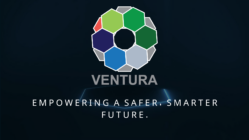It is no longer about who has the most advanced AI model. Capital will follow revenue-generating
commercialised applications
This week, I attended the Artificial Intelligence (AI) Action Summit in Paris. Since 2018, France has identified AI as an important national strategy and devoted key resources to AI research institutes, talent and infrastructure, as well as fostering an innovative environment for AI start-ups.
The foresight of President Emmanuel Macron’s government was on display as technologists and business leaders from around the world gathered in France to announce hundreds of billions of euros’ worth of AI and related infrastructure investments.
Amid the excitement about opportunities for Europe to participate in the rapid development of AI, I was asked how Alibaba Group saw the future of AI. This question requires some context.
In the past month, DeepSeek’s sudden rise to fame has captured everyone’s attention and imagination. The once obscure Chinese company launched open-source models and published a series of papers to detail its engineerin innovation which suggest that the training and inference of large-language models can be accomplished with costs much lower than brute-force training
Until now, the public’s attention had been on who is developing the smartest frontier model. Every launch of a model is accompanied with benchmark comparisons about capabilities in maths, coding, reasoning, etc. But this type of race belongs only to an exclusive club of companies that have enormous resources, each of them investing US$60 billion-US$80 billion per year in compute infrastructure.
To use a human analogy, training frontier models is like the arduous process of educating children – you need 25-plus years and lots of books and teachers to develop a postgraduate degree expert. Imagine if the AI race were about the development of the smartest children, and only a handful of rich parents could afford to have children that can win a Nobel Prize. Then, what about the rest of us?
The “DeepSeek moment” caused a panic both in our industry and in financial markets. To me, developments in the recent months have two important implications.
First, we need to rethink the goal of AI development. The AI race is no longer about who has the smartest “children”. Innovations to train and operate models more efficiently tell us the value of making the “smartest” AI in a vacuum will eventually approach zero.
In the future, developers will think about real-world applications that drive economic impact. This will accelerate the proliferation of task-specific and specialist AI models and agents. Why? Because the laws of economics dictate that capital will follow commercialised applications that generate revenue. The laws of economics will modify the absolute pursuit of “scaling law” – a principle which asserts that the larger the training data and model parameters, coupled with ever more compute consuming more GPUs and energy, the stronger the model’s intelligence.
Second, open-source models will lead to the democratisation of AI. The beauty of open source is that anyone can deploy an AI model on the infrastructure of their choice, whether that’s in a data centre or on their laptop computers. The result is that smaller companies can access open-source frontier models and develop useful applications on top of them.
AI applications based on smaller parameter models will proliferate, making AI accessible to a lot more people. For example, in an e-commerce business, an intelligent shopping assistant that understands customer needs does not require a model with a trillion parameters, just as a human store assistant can possess a high EQ (emotional quotient) without needing to have trained for a PhD in mathematics or physics.
These two implications lead me to conclude that, by analogy, educating children who can win a Nobel Prize will matter less in the AI race than developing useful and productive young people. Why obsess over who can develop the smartest AI model when few can name the person with the highest IQ (intelligence quotient) in the world, or even care? Scaling laws will have to follow the laws of economics. Capital will go to companies that innovate with lower costs for training and deploying AI.
In the future, entrepreneurs and companies will begin to focus on specialised AI models that drive economic impact, that are useful and productive. This is good for innovation, because making AI less costly and more accessible means more companies and developers can participate in the upside of AI development, and more consumers will benefit from the proliferation of useful and cool applications.








